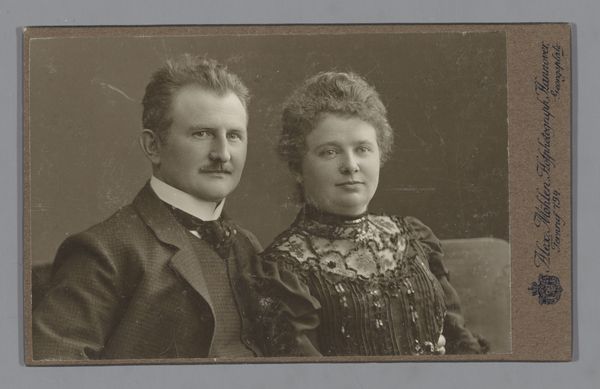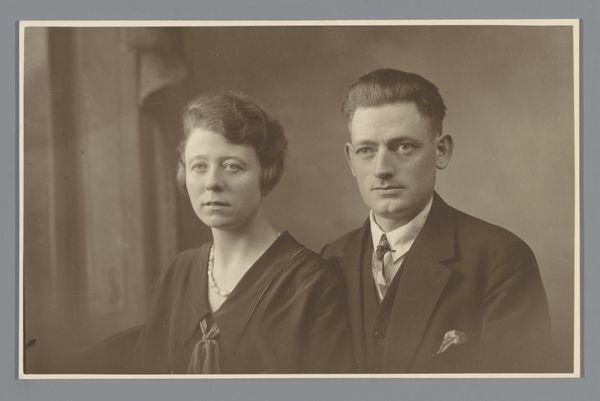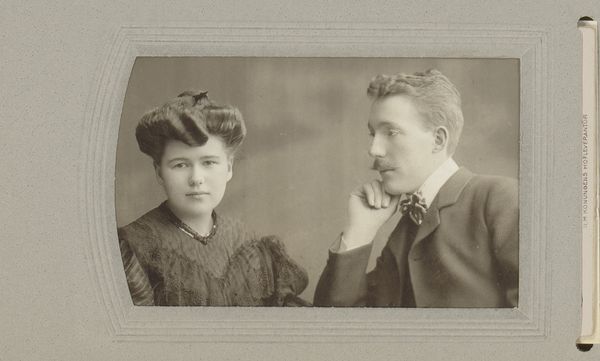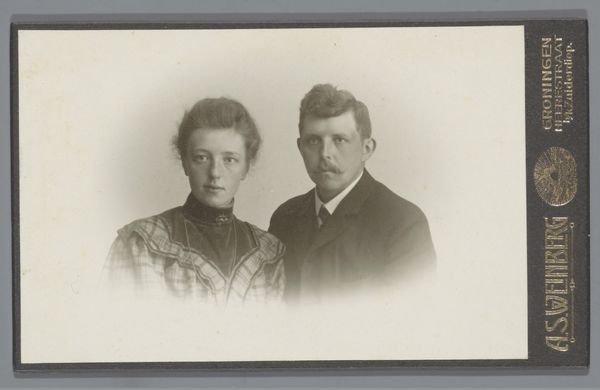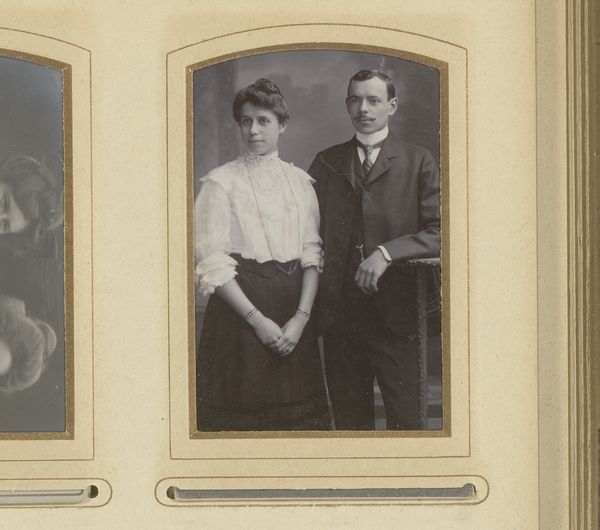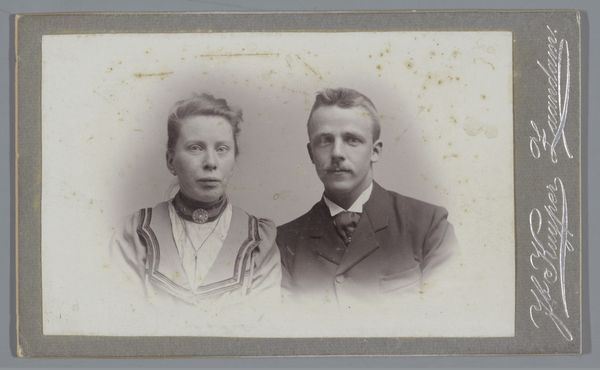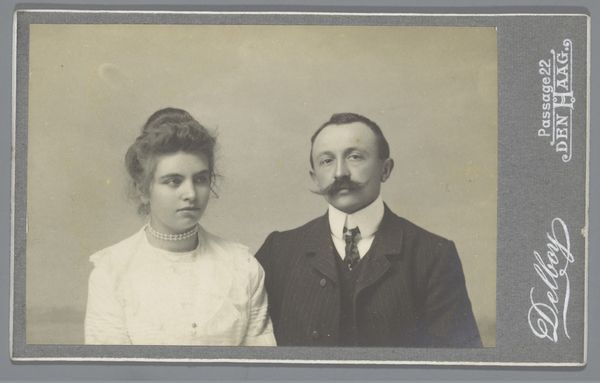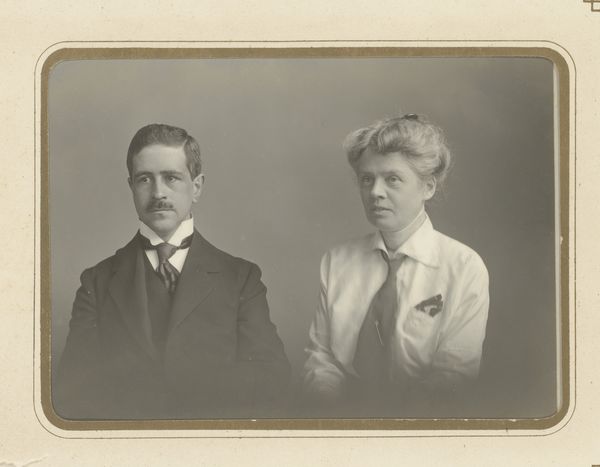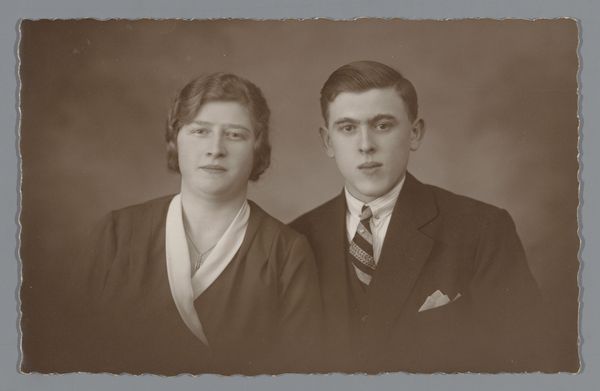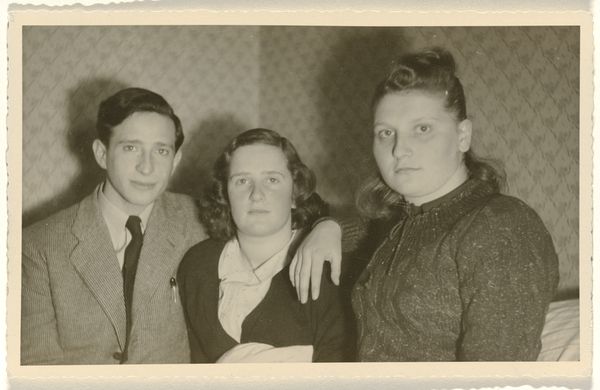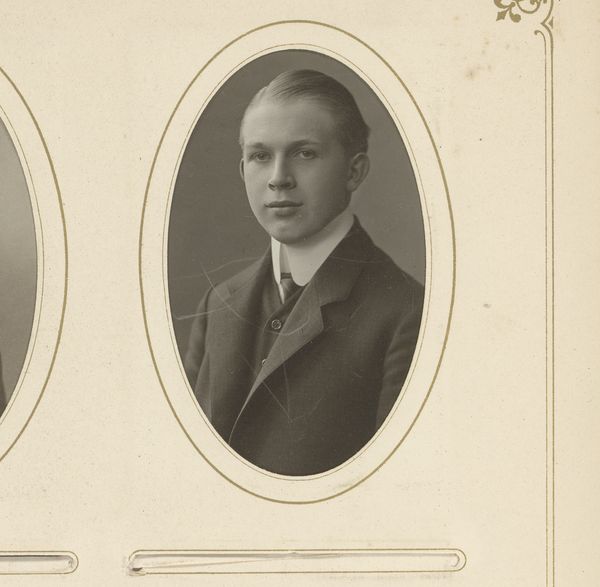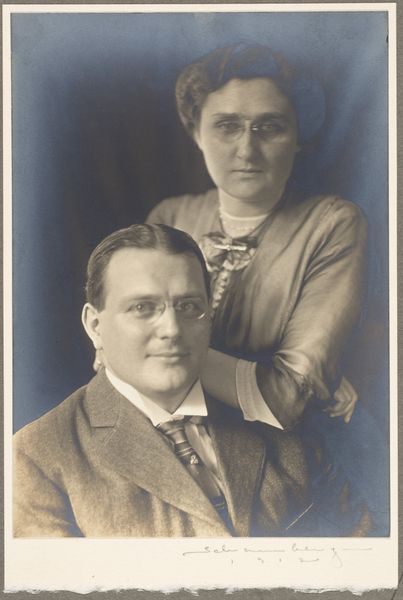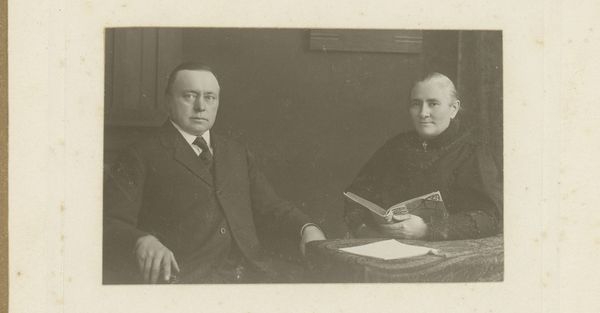
photography
#
portrait
#
still-life-photography
#
photography
#
framed image
#
group-portraits
#
realism
Dimensions: height 61 mm, width 103 mm
Copyright: Rijks Museum: Open Domain
Editor: This is a photograph titled "Portret van een onbekende man en vrouw," or "Portrait of an unknown man and woman," taken sometime between 1900 and 1914 by A. Wertheim. It's a striking image, very formal, and yet… something about their expressions feels a bit weary, almost resigned. How do you interpret this work? Curator: The weariness you perceive is compelling. Consider the era: the early 20th century, a time of immense social upheaval and rigid societal expectations, especially around gender roles. What do you notice about their physical distance and their gazes? Editor: They’re not touching, and they’re not really looking at each other, more towards the camera... but also kind of past it, lost in thought? Curator: Precisely. The physical space, amplified by their averted gazes, could reflect the emotional distance often enforced within marriages of that period, particularly within the emerging middle class. Photography, still somewhat novel, became a tool for projecting an image of stability, but perhaps here, the strain shows through. What does the woman's posture suggest to you? Editor: She’s leaning on her hand, almost as if supporting herself… tired, maybe? As if the performance of being a proper woman is exhausting? Curator: Absolutely! We can see her pose as a subtle act of resistance against the rigid performativity demanded of women then. Her weariness speaks volumes about the constraints placed upon her identity. It prompts us to question the narratives of progress that often overshadow the lived realities of individuals, especially women, during times of supposed societal advancement. And what does the table symbolize? Editor: Perhaps, a barrier... or something they both are supposed to nurture, their union, family? Curator: Exactly. Thank you for seeing it. The staged nature and seemingly ordinary picture reveals so much. Editor: It's interesting to think of this portrait as more than just a picture, but as a commentary of its time. I won't look at old photographs in the same way anymore! Curator: Agreed. Recognizing how social history influences even the most intimate representations expands our understanding. It will add depth to every piece you examine from now on!
Comments
No comments
Be the first to comment and join the conversation on the ultimate creative platform.
